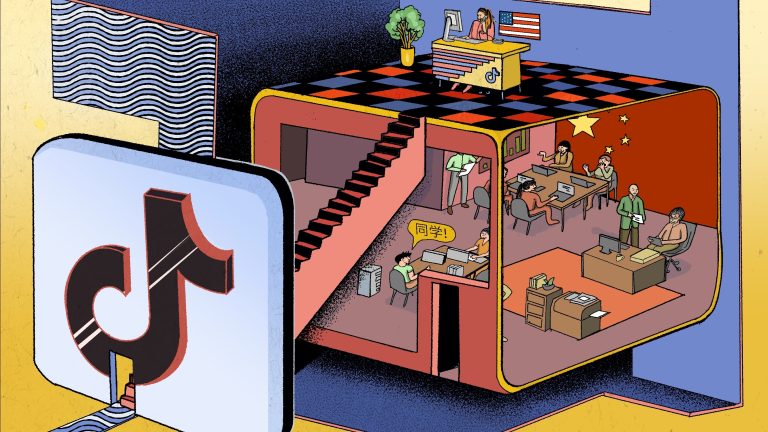After a year of seemingly endless launches of blockchain-based digital assets, 2022 was a year of reckoning for true crypto believers. Those who bet big on nonfungible tokens (NFTs) in order to own a small piece of the internet — be it for a profile picture, a metaverse avatar, or just for bragging rights — generally lost a lot of money. One report estimates the volume of NFTs across all marketplaces, including OpenSea, Rarible, and CryptoPunks, went down from almost $6 billion in January to less than $1 billion in October.
But some NFT investors lost far more than others by rushing into the hype surrounding Web3 — the so-called third generation of the internet, in which users supposedly have more agency and ownership through decentralized mechanisms, like the blockchain.
From Pakistan to Brazil, Rest of World took a glimpse at 10 of the world’s most spectacular NFT-related downfalls in 2022, whether it was because the asset’s price plummeted, its usefulness hit its limits, or its user base didn’t prove large enough.
1. BollyCoin
A fall of 93% from peak value of $0.2, within 357 days.
Indian film superstar Salman Khan announced in late 2021 that he was backing BollyCoin, an NFT marketplace created by fellow actor and filmmaker Atul Agnihotri. BollyCoin auctioned memorabilia from India’s massive film industry, Bollywood. With an average of 2,000 movies released each year, and a billion consumers worldwide, Bollywood seemed like it would provide an infinite catalog of movie stills and posters to mint as NFTs for devoted fans. The marketplace sold 20 million BollyCoins, the crypto tokens needed to buy NFTs on the eponymous marketplace. A million BollyCoins were sold within the first three hours of its launch. At its peak, BollyCoin’s price was $0.2. But collapse came swiftly; not even the April launch of a collection of 200 NFTs featuring the Dabangg franchise, one of Khan’s most successful film series, was able to sustain the token’s price. By the year’s end, the BollyCoin’s price had fallen by almost 93% and almost no bids for the marketplace’s NFTs had been placed.
2. Comedy Monsters Club
A total wipeout in value within 386 days.
In late November 2021, Venezuelan stand-up comedian Bobby Cardoso announced the upcoming launch of the Comedy Monsters Club, or CMC, a private club with online and offline perks that required the purchase of an NFT to become a member. Membership included access to special live events and other perks. The collection featured “monsters” reminiscent of the characters of the Bored Ape Yacht Club. The project sold about 10% of its entire collection before losing steam. Cardoso and his co-founders blamed falling crypto prices and chose to sell the NFTs without using cryptocurrencies, via credit card payments, for about $300 each. Club members claim Cardoso and his partners gathered more than $1.5 million from them before going dark on Discord and Twitter. Shortly after, Cardoso and partners announced they were temporarily suspending the project. Users and crypto enthusiasts worry this could now be one of Latin America’s largest NFT scams.
3. Captain Tsubasa
Projected to be sold at a value of 1 ether (around $3,000 when the NFT was listed), but delisted within 25 days.
Tsubasa Co., the Japanese company behind Captain Tsubasa — the famous football manga and anime from the 80s — sued a Singaporean company called Football Metaverse in mid-June for selling NFTs of its characters without approval. Soon after, Football Metaverse said it had received approval from a former official Chinese distributor of the manga, and kept promoting the NFTs on Twitter and Discord. It ended up removing the unauthorized Captain Tsubasa NFTs. Since then, Tsubasa Co. has announced the launch of its own yet-to-be-released NFT of the character. The whole affair is similar to the NFT copyright infringement issues surrounding other Japanese characters, like those from Dragon Ball Z and Pokémon.
4. ‘Friendship Ended With Mudasir’ Meme NFT
A fall of over 96% from peak value of $51,000, within 506 days.
Muhammad Asif Raza Rana, a Pakistani government worker, accidentally created a meme in 2015 when he posted a photoshopped picture of himself and a new best friend on Facebook. In mid-2021, he sold the image as an NFT for more than $52,000 to Andrew Kang, the co-founder of a crypto investment firm and an enthusiast of internet culture. The sale was considered a gateway transaction in the opening of the Web3 market in the country — a responsibility that proved too great for a single meme, which has now lost more than 96% of its worth.
5. Simibebés NFT
126 days from launch only to reach 22 sales
Videos of Dr. Simi, the mascot of Latin America’s largest drugstore chain, gather millions of views on YouTube. The character recently went viral on TikTok and Twitter after Mexican fans started throwing Dr. Simi plush toys at celebrities as they performed on stage. The mascot’s owners saw NFT collections as a natural next step for this internet sensation. To celebrate the opening of its 8,000th store in August, the company launched an NFT series of Dr. Simi, claiming it was the first pharmaceutical company ever to join the metaverse. It was a failure: Of the 7,864 NFTs available, only 22 were sold by mid-December.
6. Dekotora NFT
A fall of over 50% from peak value of 1 ether ($1,200), within 96 days from launch to its first and only sale
Short for “decorative truck,” Dekotora art emerged in the 80s and 90s in Japan. The genre consists of artists who decorate semi-trailer trucks with neon lights, patterned fabrics, and bright paint to turn the vehicles into moving works of art. Though revered, this style of decoration has become less popular in the past few decades. To keep it alive, through financially aiding the few drivers who still make a living by decorating and driving the trucks, the Utamarokai, Japan’s largest association of Dekotora truck owners and fans, launched an NFT collection in April. Despite the stunning artwork, and the promise to raise money for disaster relief, only one of the 38 Dekotora NFTs have been sold by the year’s end. The rest, worth 0.5 ether (about $600) each, have no bidders.
7. Metapurse’s B.20 token
A fall of over 95.5% from peak value of $29, within 544 days.
The auction of the “Everydays: The First 5000 Days” NFT by the digital artist Beeple for $69 million in March 2021 launched the NFT craze into the mainstream. The identities of the buyers, who bid under the pseudonyms Metakovan and Twobadour, were quickly revealed through a Substack post by the buyers themselves: Vignesh Sundaresan and Anand Venkateswaran, two Indian investors. They both ran a crypto-focused company called Metapurse, which tokenized and packaged several NFT art pieces. Metapurse created its own token, called B.20, which traded at about $29 right after the Beeple acquisition. At the time, the company had $189 million in digital assets under management, 27 employees, several metaverse projects, and art installations. With the crypto downturn, Sundaresan and Venkateswaran, who have dissolved their partnership, are stuck with Beeple’s artwork (the most expensive NFT ever sold) and the B.20 token, which nowadays trades at $0.09.
8. Decentraland’s MANA token
A fall of over 94.2% from peak value of $5.1, within 390 days.
One of the most hyped places to use an NFT is Decentraland, a metaverse founded by Argentine software engineers in 2017 that operates as a decentralized autonomous organization (DAO). Seemingly everyone wanted a piece of it during the crypto bull market. For up to $15,000, parcels of 16 square meters of digital land were available for sale as NFTs, and brands like Dolce & Gabbana were part of a digital Fashion Week that drew about 108,000 visitors in four days. But, aside from headline-making online events, user adoption hasn’t grown: Data from Decentraland shows an average 8,000 daily unique visitors to the site. The platform launched a property rental feature in mid-December, attempting to fuel interest in its digital real estate, but only about 7% of the 90,000 available parcels have received visitors. After its peak in November 2021, the price of Decentraland’s MANA, the token needed to buy NFT properties and other assets on the site, has been in free fall.
9. Ape Kids Football Club
A fall of over 90% from peak value of $650 within 146 days.
Despite it being a World Cup year, football-themed crypto assets dropped the ball. Even the Argentine Football Association’s fan crypto token plummeted in value, despite Argentina winning the tournament. NFTs for other football clubs didn’t fare much better. Liverpool F.C. was the first club to launch and auction a digital asset collection in March; 90% of them went unsold. A Chelsea F.C. coach created a collection called Ape Kids Football Club (AKFC) that traded above $650 after its launch in February. By mid-year, despite being promoted by Serie A and Premier League players, AKFC’s price had plunged 90% in value; it traded at about $118 in mid-December. National soccer teams also caught the NFT fever and are now reeling: The Brazilian Football Confederation (CFC) partnered with Turkish company Bitci to launch its fan crypto token and NFT collection in 2021. By November 2022, Brazilian outlets claimed the CFC had terminated its contract with Bitci due to several months of missed payments.
10. OpenSea
A fall of almost 30% in market share in a year.
NFT marketplaces were all the rage in the crypto space at the start of 2022. OpenSea, a popular NFT marketplace, held 90% of the market share in NFT transactions by volume in February, when an unknown attacker hit it with a phishing scam due to a breach of information at Customer.io, the platform’s email vendor. The attacker stole more than $1.7 million worth of NFTs. The attack took place over about three hours and wiped out 254 NFTs, including some from the Bored Ape Yacht Club and Decentraland. Although the attacker later returned the stolen NFTs — with flipped prices — to their original owners, the breach concerned OpenSea’s users. They started trying out other marketplaces like LooksRare, Magic Eden, and X2Y2. Magic Eden now enjoys about 11% of market share, partly because it has a much lower sales fee than OpenSea: 0.50% versus 2.5%. OpenSea now has about 66% market share.



